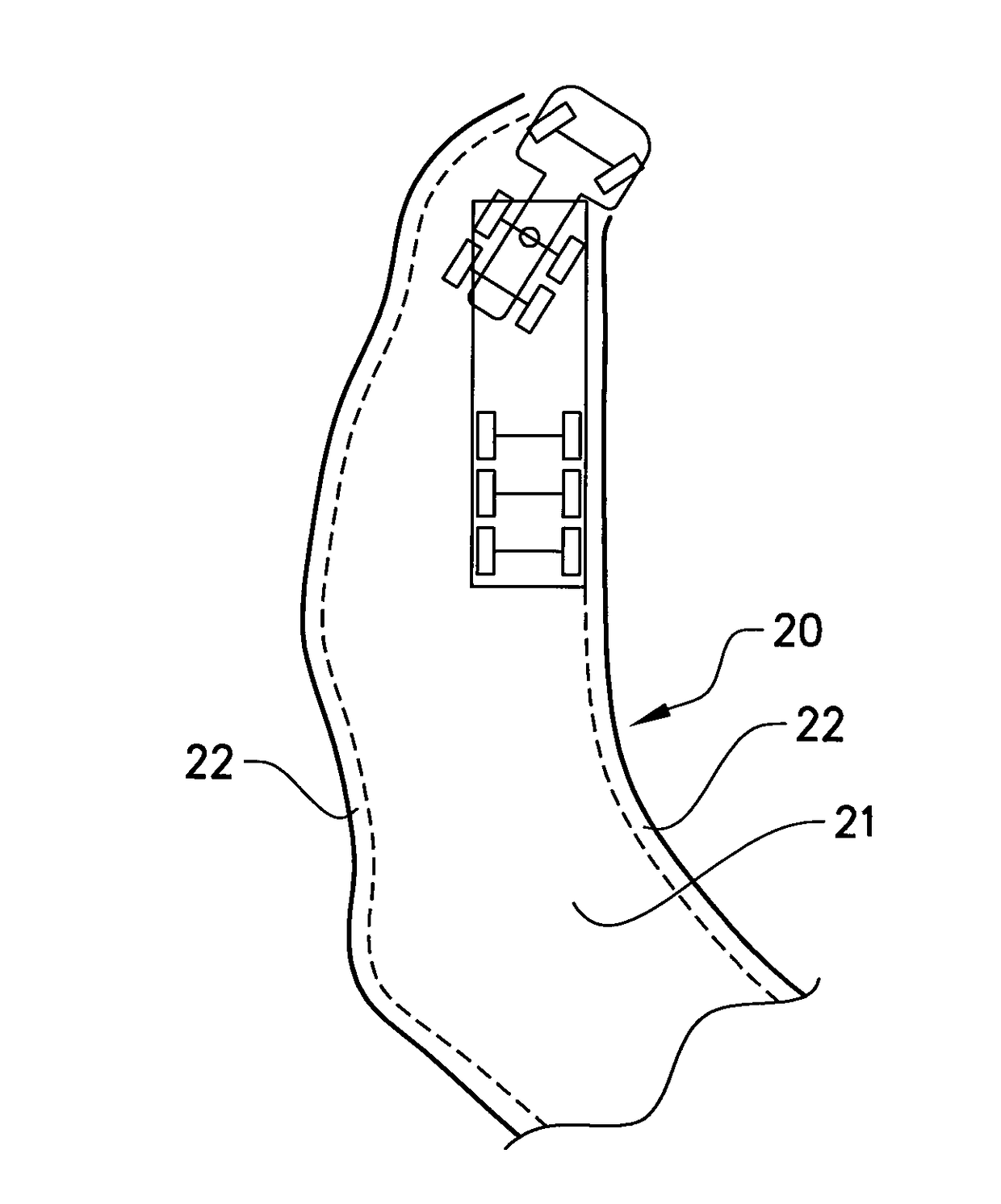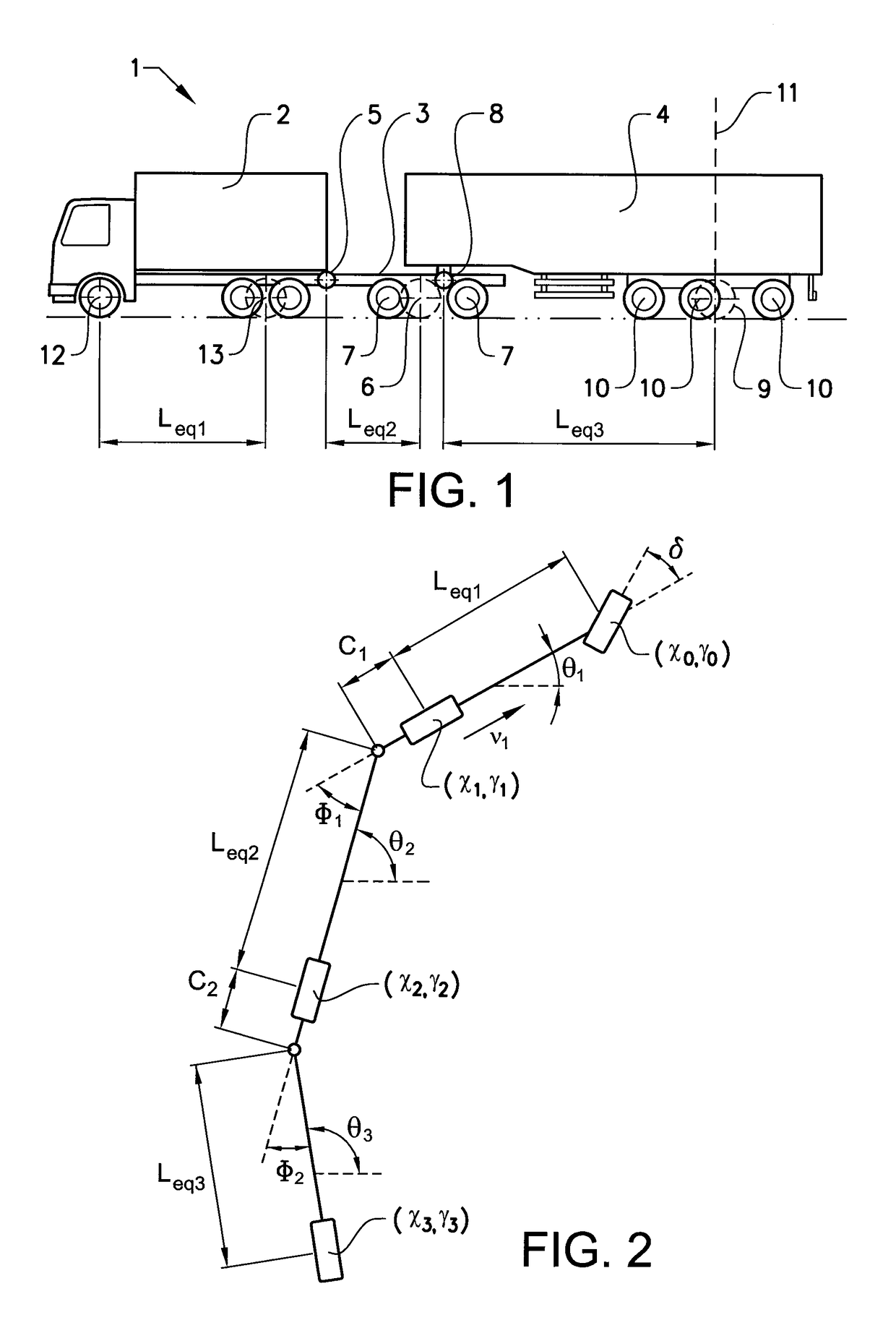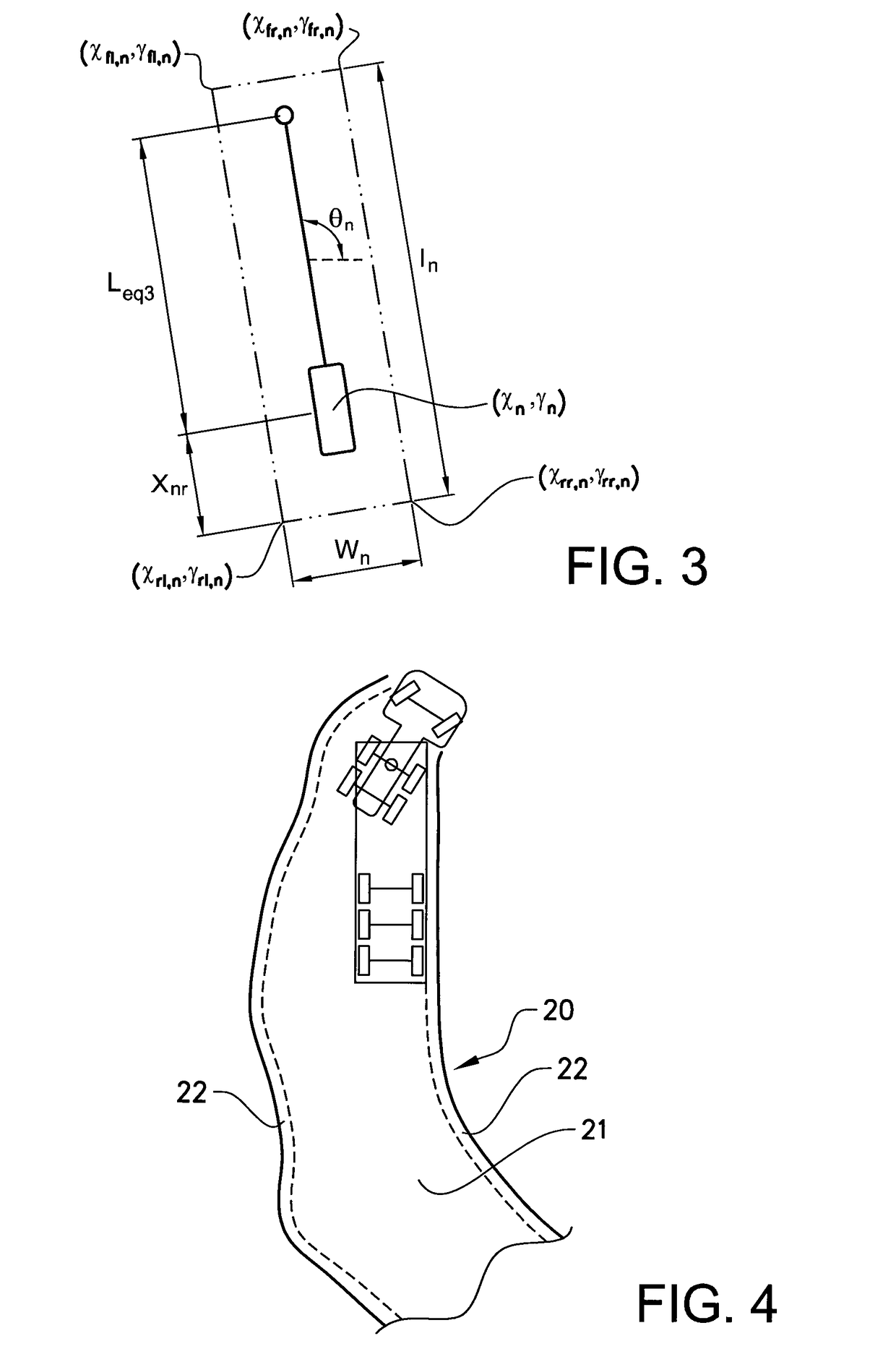Method for assisting the reversal of an articulated vehicle
a technology for assisting and reversing vehicles, applied in vehicle components, trailer steering, instruments, etc., can solve the problems of less attention to safety issues, stress and time consumption, and difficulty in reversing a commercial heavy articulated vehicle, so as to reduce the total area, reduce stress, and save time
- Summary
- Abstract
- Description
- Claims
- Application Information
AI Technical Summary
Benefits of technology
Problems solved by technology
Method used
Image
Examples
Embodiment Construction
[0025]The embodiments of the invention with further developments described in the following are to be regarded only as examples and are in no way to limit the scope of the protection provided by the patent claims. The term vehicle used on its own may mean articulated vehicle or vehicle combination. If a specific vehicle in the vehicle combination is meant, towing vehicle or towed vehicle is used.
[0026]FIG. 1 shows a schematic articulated vehicle combination 1 comprising a towing vehicle 2 and two towed vehicles 3, 4. The towing vehicle may be a regular truck adapted for commercial highway use or a tractor having a fifth wheel, but may also be an off-road truck or a bus. The first towed vehicle or trailer 3 is in the shown example a dolly having a drawbar connected to the trailer coupling of the truck. The dolly is provided with two wheel axles 7. The second towed vehicle or trailer 4 is a semitrailer, which is provided with a kingpin 8 that is connected to the fifth wheel of the dol...
PUM
 Login to View More
Login to View More Abstract
Description
Claims
Application Information
 Login to View More
Login to View More - R&D
- Intellectual Property
- Life Sciences
- Materials
- Tech Scout
- Unparalleled Data Quality
- Higher Quality Content
- 60% Fewer Hallucinations
Browse by: Latest US Patents, China's latest patents, Technical Efficacy Thesaurus, Application Domain, Technology Topic, Popular Technical Reports.
© 2025 PatSnap. All rights reserved.Legal|Privacy policy|Modern Slavery Act Transparency Statement|Sitemap|About US| Contact US: help@patsnap.com



